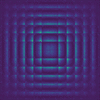issue contents
April 2023 issue

Cover illustration: Image from Grzechnik et al. [(2023). Acta Cryst. B79, 104–113] showing an animated version of the modulated structure highlighting the different configurations present in the structure of mixed valence A2V3O8 vanadate fresnoite at room temperature. The structure (P4bm, Z = 2) is built up of layers with corner-sharing V5+O4 tetrahedra and V4+O5 square pyramids separated by the A+ cations, where A+ is K+, Rb+, Cs+ or (NH4)+.
scientific commentaries


research papers


 access
access



 access
access access
access

 access
access



 access
access



addenda and errata
 access
access
 journal menu
journal menu





































